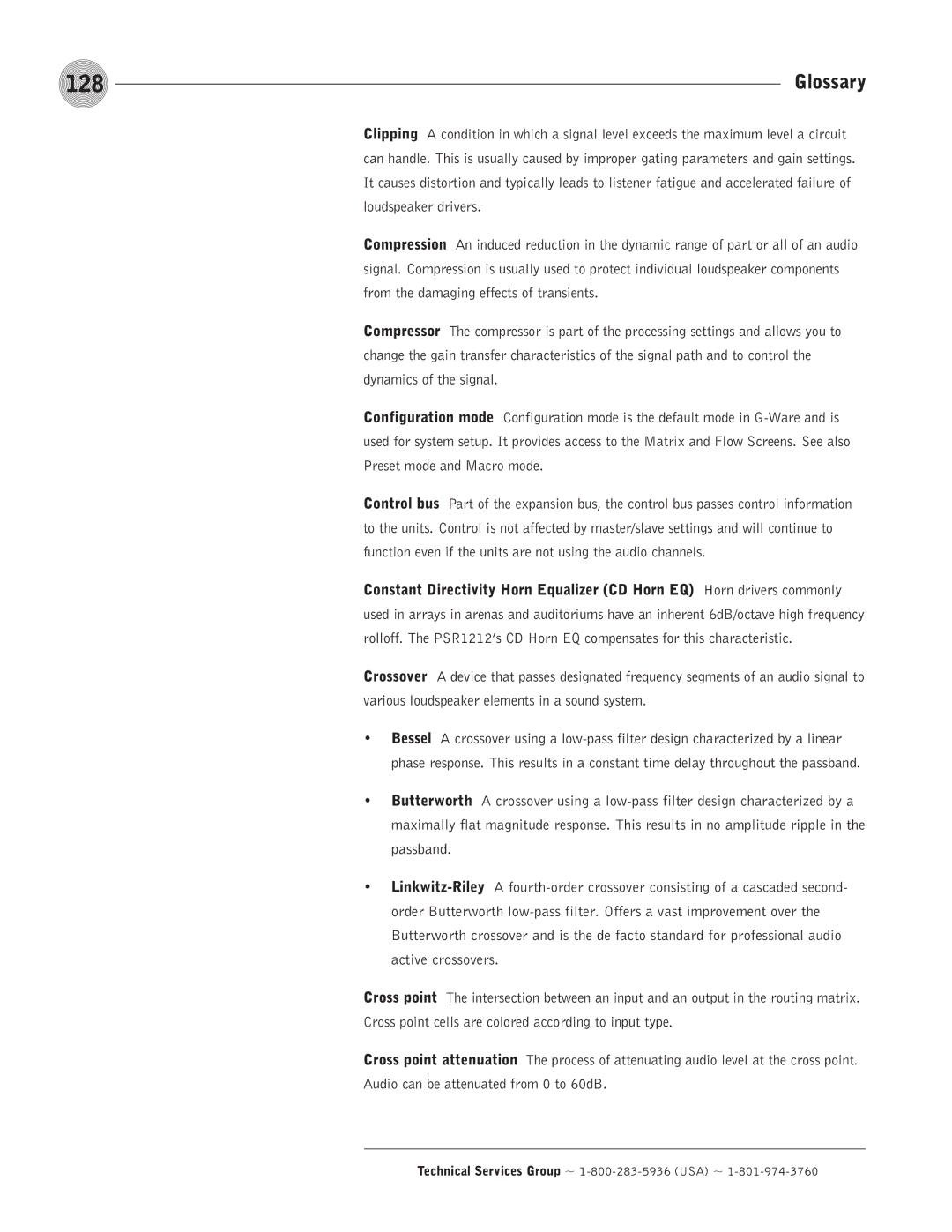
128 | Glossary |
Clipping A condition in which a signal level exceeds the maximum level a circuit can handle. This is usually caused by improper gating parameters and gain settings. It causes distortion and typically leads to listener fatigue and accelerated failure of loudspeaker drivers.
Compression An induced reduction in the dynamic range of part or all of an audio signal. Compression is usually used to protect individual loudspeaker components from the damaging effects of transients.
Compressor The compressor is part of the processing settings and allows you to change the gain transfer characteristics of the signal path and to control the dynamics of the signal.
Configuration mode Configuration mode is the default mode in
Control bus Part of the expansion bus, the control bus passes control information to the units. Control is not affected by master/slave settings and will continue to function even if the units are not using the audio channels.
Constant Directivity Horn Equalizer (CD Horn EQ) Horn drivers commonly used in arrays in arenas and auditoriums have an inherent 6dB/octave high frequency rolloff. The PSR1212’s CD Horn EQ compensates for this characteristic.
Crossover A device that passes designated frequency segments of an audio signal to various loudspeaker elements in a sound system.
•Bessel A crossover using a
•Butterworth A crossover using a
•
Cross point The intersection between an input and an output in the routing matrix. Cross point cells are colored according to input type.
Cross point attenuation The process of attenuating audio level at the cross point. Audio can be attenuated from 0 to 60dB.
